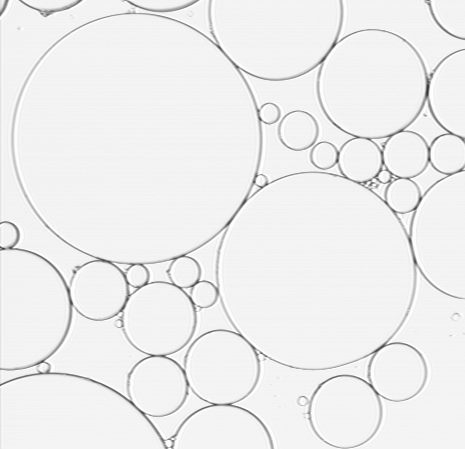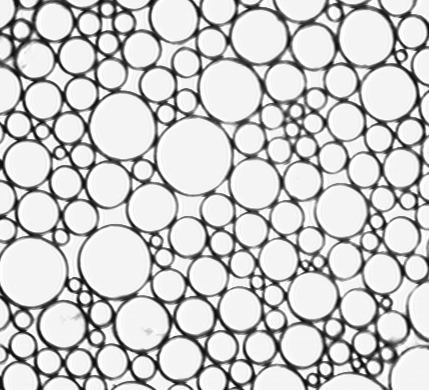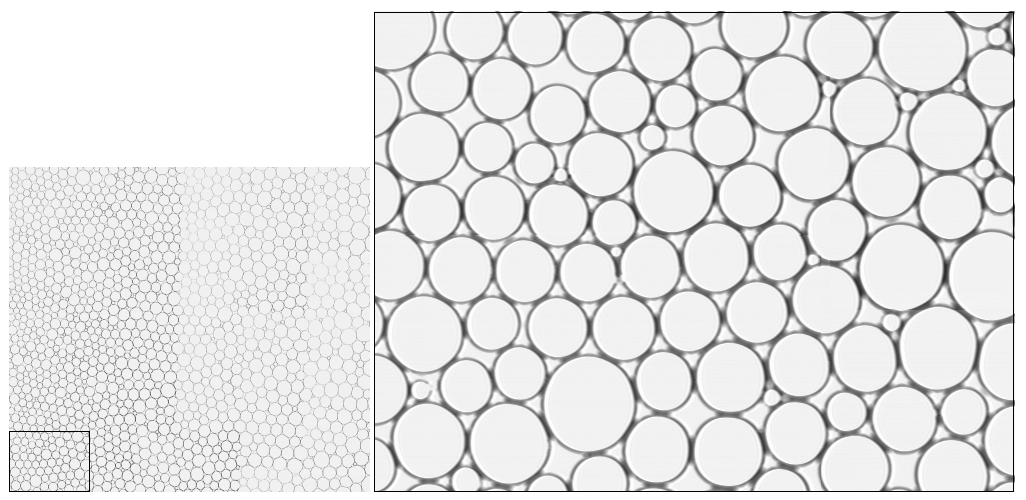Emulsions
2D Emulsions
We are interested in utilizing 2D emulsions as a model system to understand universal properties of 2D jammed systems. The main task is to undestand the relationship between contact forces and particle mobility during unjamming events. We can visualize these events by first confining emulsion droplets between two glass microscope slides separated by a distance less than the diameter of a droplet, and then image motion of droplets using bright field microscopy. Below are a few images taken of 2D water hexadecane emulsions. The average diameter of these droplets is ~ 100 μm


The advantage of using 2D emulsions to study 2D jamming is that we can simultaneously measure the mobility and the forces acting on a droplet using microscopy. When an emulsion droplet is not in contact with another droplet it will be circular in sphape. On the other hand, if a droplet is in contact with one or more droplets, then there are forces between these droplets causing the them to deform. By quantifying the amount of deformation we can compute the forces between droplets.
In the static case this method also provides an advantage to easily collect large statistics with good accuracy by merging together multiple images taken at various locations within the emulsion. Below is an image illustrating our ability to merge images. The left image is 45 microscopic images merged together (the merged image has been rescaled to fit the page). The size of a single image taken with a microscope compared to the entire size of the merged images is shown by the image to the right. The image to the right is an actual single image belonging the black box area in the merged images.
 Click image for enlarged view.
Click image for enlarged view.
| 